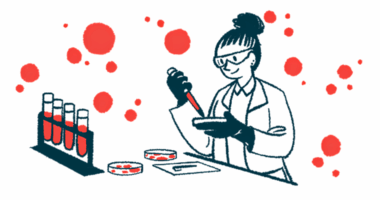Unmet Medical Need in Severe Hem B Care, European Study Shows
Adults with severe hemophilia B have a persistent number of bleeds per year, as well as joint problems and mild to moderate chronic pain, revealing an unmet medical need in these patients, according to real-world data from the European CHESS II study.
The study, “Clinical, humanistic, and economic burden of severe haemophilia B in adults receiving factor IX prophylaxis: findings from the CHESS II real-world burden of illness study in Europe,” was published in the Orphanet Journal of Rare Diseases.
Since hemophilia B is four to five times less common than hemophilia A, real-world studies focused on assessing the current burden of severe hemophilia B are still limited.
To better understand the clinical and economic burden of severe hemophilia B in Europe, a team of researchers at uniQure, along with colleagues at HCD Economics and the University of Chester, analyzed data from the CHESS II study.
CHESS II investigated the burden of illness in adults with severe hemophilia A or B across the U.K. and seven other European countries: Denmark, France, Germany, Italy, the Netherlands, Romania, and Spain.
Specifically, they analyzed retrospective data, collected from 2019 to 2020, of severe hemophilia B patients from France, Germany, Italy, Spain, and the U.K.
Patients had not developed FIX inhibitors — neutralizing antibodies that target therapies meant to replace FIX, the clotting factor missing in hemophilia B patients — at the time of data collection and were being treated with either standard (SHL) or extended half-life (EHL) replacement therapies on a preventive basis.
The analysis included both patient- and physician-reported clinical, humanistic, and economic outcomes. Participants completed questionnaires on bleeding, joint status, quality of life, and hemophilia-related direct and indirect costs.
In total, they reviewed data from 75 hemophilia B patients, including 42 (56%) who were treated with SHL and 33 (44%) with EHL. Patient-reported outcomes were available for 40 (53%) patients.
Most patients (70%) had two or more bleeding events per year, with a mean annualized bleed rate (ABR) of 2.4. ABR was similar for patients receiving EHL or SHL preventive therapy (2.5 vs. 2.4).
The proportion of patients with a history of joint surgery rates was also similar for those receiving EHL or SHL replacement therapies (33% vs. 24%, respectively).
However, a greater proportion of patients receiving EHL reported having at least one target joint (30% vs. 17%). Target joints were defined as joints where three or more bleeds occurred over a period of six months.
Over three-quarters of the patients reported mild or moderate chronic pain (76%). Also, most patients (63%) reported that hemophilia had an impact on their daily lives, and 20% stated they had to adapt their treatment regimen before physical activity.
The mean annual medical costs due to hemophilia per patient amounted to €235,723 (about $262,430). Most of these costs were driven by FIX treatment costs, which totaled €232,328 (about $258,650). Costs were higher for EHL (€290,620, or about $323,547) than for SHL (€186,528 or about $207,661).
FIX treatment costs varied substantially between countries, with the highest costs seen in Germany (€393,263, or about $437,820) and the lowest in the U.K. (about €182,219, or about $202,864). The mean annual indirect costs (€8,973 or $9,995) were driven by early retirement or the need to stop working due to hemophilia.
Patients had a mean score of 0.67 on the European Quality of Life 5-Dimensions (EQ-5D), a standardized measure of overall health and quality of life. Its scores range from zero (worse possible state) to one (best possible health state).
Overall, these real-world data “demonstrate the substantial clinical and humanistic burden of severe haemophilia B, together with a consistent economic burden,” despite preventive therapy, the researchers wrote.
Moreover, according to researchers, these findings highlight the “persistent unmet needs for these patients, their caregivers, and society.”







